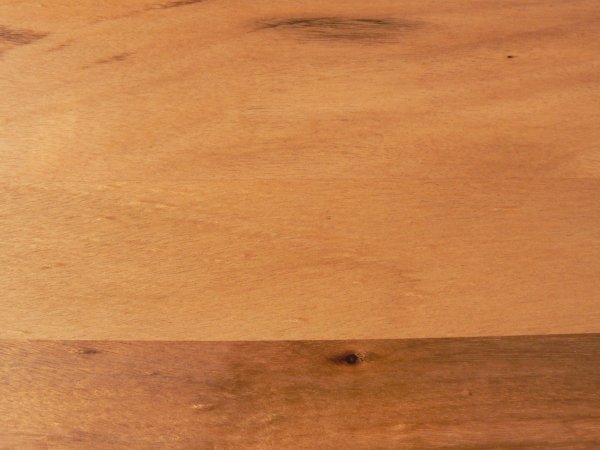The Tree: Goncalo alves is a large canopy tree, sometimes reaching 120 feet in height in the natural rainforest, with a trunk 3 feet in diameter. The tree has a clear, straight cylindrical bole for two-thirds or more of its height, above a small buttress.
Principal Uses: Because of its durability, goncalo rates as one of the best heavy construction timbers. Yet it is also well regarded for use in distinctive wood flooring as well as in fine furniture and cabinet making. It can even be used in decorative veneers and for specialty items such as archery bows, billiard cues, and knife handles.
Appearance: As the alternate name "tigerwood" suggests, goncalo is noted for its bold, characteristic striping. The color of the heartwood of goncalo, when first cut, ranges from russet brown, orange brown, or reddish brown to red, with narrow to wide irregular stripes, which are medium to very dark brown. After exposure, the wood turns red, brown, or dark reddish brown, and the stripes become nearly black. The sharply demarcated sapwood is a dingy gray or brownish-white. The grain varies between straight and wavy, and the uniform texture ranges between fine and medium, uniform. The dark longitudinal bands in the wood make for a very striking figure.
Other Interesting Information: When sanding, Tigerwood produces an oily sawdust that will quickly clog sandpaper if not cleaned regularly. Tigerwood has almost no open grain and once finished, produces a very smooth face. Colors in Tigerwood can vary wildly from almost solid brown to grey with dark, prominent streaks that resemble a tiger's stripes.










Log In